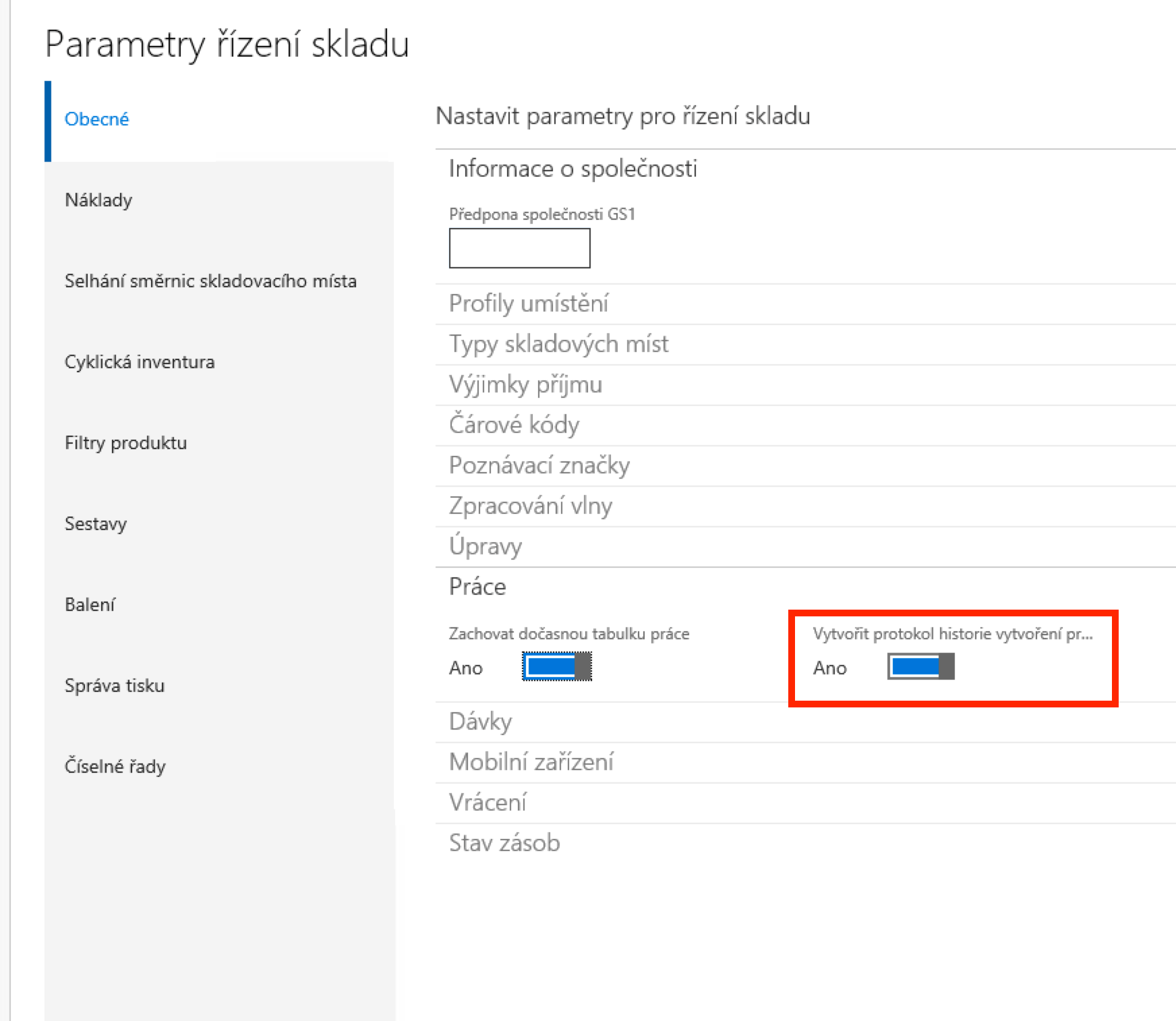WMS gives us the freedom to model logical processes.
With the addition of the new WMS functionality in the product Microsoft Dynamics AX, they opened up to us brand new possibilitiesuse of Microsoft Dynamics AX in warehouse management. The new WMS tool is very flexible which gives us a huge freedom to model logistics processes.
High flexibility, however, requires a certain discipline and adherence to certain rules, otherwise it can become a burden and only translate into a slow creeping stock process.
To help you get the most out of your WMS, here are 3 tips for improving WMS performance in Microsoft Dynamics AX.
Tip 1: Detailed overview only when really needed
WMS usually consists of two tasks, pick something up (Pick) and take it somewhere else (Put it down - PUT).
As you already know, the basic entity in the new WMS is "Work" (Work) this entity usually consists of two tasks, namely something pick it up (Pick) and take it somewhere else (put it down - PUT). The generation of these jobs is directly controlled by the "Location Directives" and "Work templates" rules.
One of the great helpers for diagnosing the correct setup of all logistics processes is the detailed logging of how the system goes through (evaluates) the created rules for job creation (Work).

This Log is called "Work Creation History Protocol". This log records step by step information about how each work was created.
This log is therefore very important at the time of creating, setting up and debugging warehouse processes in the system.
However, we recommend disabling the creation of this log in live operation.
Turning this functionality off (On) is very easy from the "Warehouse management parameters" menu

Creating a log has a big impact on the speed of creating "Work"(Work). We know from our own experience that disabling this log generation can speed up the creation of "Jobs" by up to 20%. This, assuming the need to generate thousands of "Jobs" at the same moment (every morning), can save us up to several tens of minutes.
So think about it, whether you really need this log or whether you can turn it off.
Tip 2. Save the rules
You may already know that the functionality of the new WMS in Microsoft Dynamics AX works on the basis of pre-set rules "Warehouse guidelines" and "Work templates". The combination of these rules determines exactly what a particular warehouse process will look like.
While the rules entered in the "Warehouse location direction" give us the direction, i.e. from which place we will take the goods when picking or where we will put them when loading, the rules entered in the "Work templates" determine how the specific process will look like (whether it will be one or two steps).
In the picture you can see the screen from the system with the rules "Storage space guidelines"

Note the highlighted part of the serial numbers of each rule. These numbers are important for the logic of the evaluation. The system uses these numbers as priorities and always starts evaluating the rules from the lowest number to the highest.
The method of evaluating which rule is the correct one is that the system tries to apply the rules one by one until until they hit upon a rule that's "right"
The same evaluation process is used for the "Work Templates" rules.
In practice, it can easily happen that we have hundreds of rules created for both "Warehouse Directions" and "Job Templates" and thus we are very likely to find our needed rule in a very high serial number area.
When you consider the fact that the system goes through all the rules from the lowest sequence number so it takes a long time to get to the rulethat is right for the process you are currently creating.
It is therefore more than advisable to try to keep the number of "Warehouse Guidelines" and "Work Templates" rules to a minimum. This fact should be kept in mind not only during the initial setup of the application (Dynamics AX implementation), but also in subsequent adjustments to warehouse processes.
The fact that the system goes through all the rules, it is a good idea to be aware of this when creating the warehouse map in the system. There are many ways to design the warehouse more efficiently in terms of system operation and thus to greatly reduce the total number of rules "Warehouse guidelines" and "Work templates"
Tip 3. Be up to date
You are not alone in this.
It is important to note that the WMS in Microsoft Dynamics AX is used by a large number of customers around the world.
All of these customers are likely to face the same or similar problems in their everyday situations. There will be problems related to functionality but also problems related to the performance of the solution.
I think it's good to remember that the software giant behind the app, Microsoft. Fortunately, the people at Microsoft listen to their customers and bring regular patches and updates targeting the functionality that customers have the most trouble with.
Microsoft also regularly brings updates and fixes related to application performance.
So you need to make sure that your app contains all the latest official patches. Believe that if you keep your application up-to-date and install all patch packages related to the performance of the application, you will avoid a lot of problems that you may encounter in your daily work with the system.
The most important thing is to make sure that the app contains all the latest official patches
For a list of current performance-related fixes, you can find, for example, the following website.

Jiří Hosenseidl works as a Dynamics AX Consultant at Blue Dynamic.

